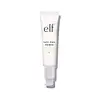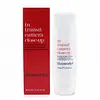What's inside
What's inside
 Key Ingredients
Key Ingredients

 Benefits
Benefits

 Concerns
Concerns

 Ingredients Side-by-side
Ingredients Side-by-side

Water
Skin ConditioningCannabis Sativa Seed Oil
EmollientGlycerin
HumectantStearic Acid
CleansingButyrospermum Parkii Butter
Skin ConditioningCaprylic/Capric Triglyceride
MaskingCetearyl Alcohol
EmollientGlyceryl Stearate Se
EmulsifyingSimmondsia Chinensis Seed Oil
EmollientHelianthus Annuus Seed Oil
EmollientDaucus Carota Sativa Root Extract
Skin ConditioningDaucus Carota Sativa Seed Oil
EmollientAscorbyl Palmitate
AntioxidantBeta-Carotene
Skin ConditioningSodium Hyaluronate
HumectantSorbitan Stearate
EmulsifyingPhenoxyethanol
PreservativeCeteareth-20
CleansingSynthetic Fluorphlogopite
Caprylyl Glycol
EmollientEthylhexylglycerin
Skin ConditioningHydroxyethylcellulose
Emulsion StabilisingBHT
AntioxidantDisodium EDTA
Water, Cannabis Sativa Seed Oil, Glycerin, Stearic Acid, Butyrospermum Parkii Butter, Caprylic/Capric Triglyceride, Cetearyl Alcohol, Glyceryl Stearate Se, Simmondsia Chinensis Seed Oil, Helianthus Annuus Seed Oil, Daucus Carota Sativa Root Extract, Daucus Carota Sativa Seed Oil, Ascorbyl Palmitate, Beta-Carotene, Sodium Hyaluronate, Sorbitan Stearate, Phenoxyethanol, Ceteareth-20, Synthetic Fluorphlogopite, Caprylyl Glycol, Ethylhexylglycerin, Hydroxyethylcellulose, BHT, Disodium EDTA
Water
Skin ConditioningGlycerin
HumectantCetyl Alcohol
EmollientStearic Acid
CleansingAloe Barbadensis Leaf Extract
EmollientButyrospermum Parkii Butter
Skin ConditioningCaprylic/Capric Triglyceride
MaskingGlyceryl Stearate
EmollientChondrus Crispus Extract
Skin ConditioningArgania Spinosa Kernel Oil
EmollientBorago Officinalis Seed Oil
EmollientCaffeine
Skin ConditioningSodium Hyaluronate
HumectantSorbitan Stearate
EmulsifyingRosa Damascena Flower Oil
MaskingPhenoxyethanol
PreservativeCitrus Aurantium Amara Flower Oil
MaskingDimethicone
EmollientCeteareth-20
CleansingEuphrasia Officinalis Extract
AntimicrobialHydroxypropylcellulose
EmulsifyingBenzyl Alcohol
PerfumingMalva Sylvestris Extract
AstringentTriethanolamine
BufferingPotassium Sorbate
PreservativeAlcohol Denat.
AntimicrobialTocopherol
AntioxidantAchillea Millefolium Extract
CleansingAlchemilla Vulgaris Extract
AstringentAscorbyl Palmitate
AntioxidantAsparagopsis Armata Extract
Skin ProtectingBisabolol
MaskingMelissa Officinalis Leaf Extract
Skin ConditioningMentha Piperita Leaf Extract
Skin ConditioningPhospholipids
Skin ConditioningPrimula Veris Extract
Skin ConditioningRetinyl Palmitate
Skin ConditioningTocopheryl Acetate
AntioxidantVeronica Officinalis Extract
Skin ConditioningCI 77891
Cosmetic ColorantMica
Cosmetic ColorantIodopropynyl Butylcarbamate
PreservativeSodium Gluconate
Skin ConditioningSodium Hydroxymethylglycinate
PreservativeChlorphenesin
AntimicrobialWater, Glycerin, Cetyl Alcohol, Stearic Acid, Aloe Barbadensis Leaf Extract, Butyrospermum Parkii Butter, Caprylic/Capric Triglyceride, Glyceryl Stearate, Chondrus Crispus Extract, Argania Spinosa Kernel Oil, Borago Officinalis Seed Oil, Caffeine, Sodium Hyaluronate, Sorbitan Stearate, Rosa Damascena Flower Oil, Phenoxyethanol, Citrus Aurantium Amara Flower Oil, Dimethicone, Ceteareth-20, Euphrasia Officinalis Extract, Hydroxypropylcellulose, Benzyl Alcohol, Malva Sylvestris Extract, Triethanolamine, Potassium Sorbate, Alcohol Denat., Tocopherol, Achillea Millefolium Extract, Alchemilla Vulgaris Extract, Ascorbyl Palmitate, Asparagopsis Armata Extract, Bisabolol, Melissa Officinalis Leaf Extract, Mentha Piperita Leaf Extract, Phospholipids, Primula Veris Extract, Retinyl Palmitate, Tocopheryl Acetate, Veronica Officinalis Extract, CI 77891, Mica, Iodopropynyl Butylcarbamate, Sodium Gluconate, Sodium Hydroxymethylglycinate, Chlorphenesin
 Reviews
Reviews

Ingredients Explained
These ingredients are found in both products.
Ingredients higher up in an ingredient list are typically present in a larger amount.
Ascorbyl Palmitate is created by combining pure Vitamin C and palmitic acid. It is an antioxidant and helps reduce hyperpigmentation.
This ingredient is a more stable version of Vitamin C, meaning it does not disintegrate as quickly when exposed to sunlight. However, studies show it does not penetrate skin as well as pure Vitamin C.
Ascorbyl Palmitate is oil soluble.
Read more about other types of Vitamin C:
Learn more about Ascorbyl PalmitateThis ingredient is also known as shea butter. It is an effective skin hydrator and emollient.
Emollients help soothe and soften your skin. It does this by creating a protective film on your skin. This barrier helps trap moisture and keeps your skin hydrated. Emollients may be effective at treating dry or itchy skin.
Shea butter is rich in antioxidants. Antioxidants help fight free-radicals, or molecules that may harm the body. It is also full of fatty acids including stearic acid and linoleic acid. These acids help replenish the skin and keep skin moisturized.
While Shea Butter has an SPF rating of about 3-4, it is not a sunscreen replacement.
Shea butter may not be fungal acne safe. We recommend speaking with a professional if you have any concerns.
Learn more about Butyrospermum Parkii ButterThis ingredient is an emollient, solvent, and texture enhancer. It is considered a skin-softener by helping the skin prevent moisture loss.
It helps thicken a product's formula and makes it easier to spread by dissolving clumping compounds.
Caprylic Triglyceride is made by combining glycerin with coconut oil, forming a clear liquid.
While there is an assumption Caprylic Triglyceride can clog pores due to it being derived from coconut oil, there is no research supporting this.
Learn more about Caprylic/Capric TriglycerideCeteareth-20 is an emulsifier and cleansing agent. It is derived from cetearyl alcohol, a fatty alcohol.
As an emulsifier, Ceteareth-20 prevents oil and water from separating. It is also a surfactant. Surfactants help gather oil, pollution, and dirt to be washed away.
Glycerin is already naturally found in your skin. It helps moisturize and protect your skin.
A study from 2016 found glycerin to be more effective as a humectant than AHAs and hyaluronic acid.
As a humectant, it helps the skin stay hydrated by pulling moisture to your skin. The low molecular weight of glycerin allows it to pull moisture into the deeper layers of your skin.
Hydrated skin improves your skin barrier; Your skin barrier helps protect against irritants and bacteria.
Glycerin has also been found to have antimicrobial and antiviral properties. Due to these properties, glycerin is often used in wound and burn treatments.
In cosmetics, glycerin is usually derived from plants such as soybean or palm. However, it can also be sourced from animals, such as tallow or animal fat.
This ingredient is organic, colorless, odorless, and non-toxic.
Glycerin is the name for this ingredient in American English. British English uses Glycerol/Glycerine.
Learn more about GlycerinPhenoxyethanol is a preservative that has germicide, antimicrobial, and aromatic properties. Studies show that phenoxyethanol can prevent microbial growth. By itself, it has a scent that is similar to that of a rose.
It's often used in formulations along with Caprylyl Glycol to preserve the shelf life of products.
Sodium Hyaluronate is hyaluronic acid's salt form. It is commonly derived from the sodium salt of hyaluronic acid.
Like hyaluronic acid, it is great at holding water and acts as a humectant. This makes it a great skin hydrating ingredient.
Sodium Hyaluronate is naturally occurring in our bodies and is mostly found in eye fluid and joints.
These are some other common types of Hyaluronic Acid:
Learn more about Sodium HyaluronateSorbitan Stearate comes from sorbitol and stearic acid. Sorbitol is a type of sugar and stearic acid is a fatty acid.
It is used as an emulsifier and helps ingredients stay together by creating water-in-oil emulsions.
This ingredient may not be Malassezia folliculitis, or fungal-acne safe.
Stearic Acid is a fatty acid. It is an emollient, emulsifier, and texture enhancer.
As an emollient, stearic acid helps soften skin. It aids the skin's protective barrier by preventing water loss. It also provides a gentle cleansing effect without stripping away natural oils.
Stearic acid may also be used to enhance the texture of products. It can add volume and stabilize ingredients such as water and oil. This can help water and oil ingredients from separating.
Sources of stearic acid include animal or vegetable fats/oils such as coconut or shea. It can be naturally found in butter, cocoa butter, shea butter, vegetable fats, and animal tallow.
This ingredient may not be Malassezia folliculitis, or fungal-acne safe.
Learn more about Stearic AcidWater. It's the most common cosmetic ingredient of all. You'll usually see it at the top of ingredient lists, meaning that it makes up the largest part of the product.
So why is it so popular? Water most often acts as a solvent - this means that it helps dissolve other ingredients into the formulation.
You'll also recognize water as that liquid we all need to stay alive. If you see this, drink a glass of water. Stay hydrated!
Learn more about Water